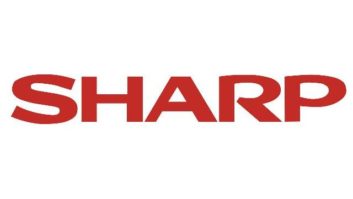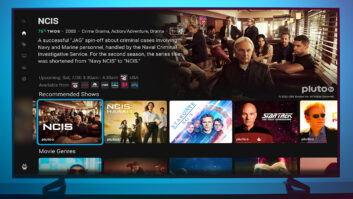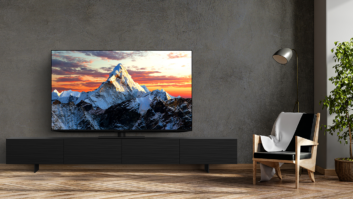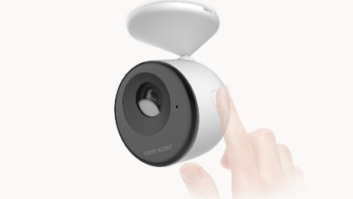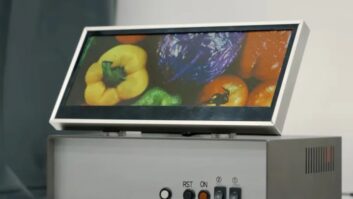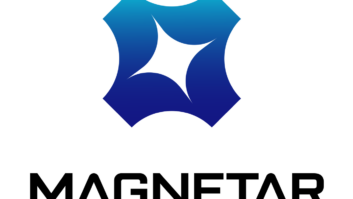Rick Calacci’s frequent flyer miles have gone up dramatically since joining Sharp Electronics as senior VP/ general manager of the Consumer Electronics Group in mid-October of last year.
Calacci, who has spent more than 25 years in the CE business, 19 with Toshiba America, has visited Sharp’s plants, engineers and executives in Japan four times and has crisscrossed the United States more times than he cares to remember. Why all the travel? It is nothing less than a fundamental change of Sharp’s approach in the United States. He is trying to bring Sharp technology developed in Japan to this market efficiently, effectively and profitably.
Since joining Sharp last fall Calacci has changed its sales operation and has taken the SharpVision brand, which was used for projection TVs only, and made it a launching pad for high-tech digital products.
Tomorrow Calacci, and new consumer electronics group directors Michael Amkreutz and Mark Know, hold a press conference in New York to review the changes and provide details on new products that Sharp and SharpVision will be selling soon. (See the July 22 issue of TWICE for details.)
Recently TWICE got Calacci to sit in one place long enough to review what changes have gone on at Sharp and what retailers should look for from the company in the future. Here is some of what he had to say about the changes Sharp has undergone.
What were retailers’ perceptions of Sharp when you first joined the company?
I was on the job for six days and I went to the West Coast to visit with customers, just by myself without any of our salespeople, like that old United Airlines commercial. I visited people I’ve known for 25 years in this business to find out where we stood and get their comments. They told me Sharp produces great products and we have great technology. We are a leader in liquid crystal technology, and they knew that. But they didn’t understand our marketing philosophy and how we go to market. We needed to reassure our retailers about our strategy.
You’ve visited Japan and the Sharp engineers and plants four times since you’ve been with the company. What did those trips show you about Sharp’s technological background?
During the third week with the company I visited the factories and saw the technology and products that have not been exploited [by Sharp] in the U.S. [During that trip and other visits] I spent 90 percent of my time with the engineers at the factories. For instance, on a Monday I’ll talk to the engineers and make suggestions about products they are working on. They get so excited that by Tuesday they have mock-ups for me to look at. The factories are excited [that Sharp in the U.S. is interested], in fact they are now beyond excited.
Last January we instituted a Define Channel Strategy with our factories. This has us define at the factory the types of products we want to sell to certain types of retailers, before they are shipped here. This eliminates waste and confusion once the products reach the U.S.
SharpVision has now been positioned as an upscale brand being sold only by independent retailers. How is this a critical component of change in marketing and sales?
We transferred the SharpVision brand from projection TVs to the rest of the line, and it has become a value-brand and a sub-brand of Sharp. This is where we launch our cutting edge products. We expanded our customer base [to sell higher-end products]. We began to approach independent retailers who can perform added-value sales, which is what we need.
The distribution strategy is committed to the message that SharpVision is the cutting edge brand. The expansion of it, with AQUOS liquid crystal displays and future products, is critical to the strategy’s success.
How has the retail authorization process gone for SharpVision and Sharp brands? How has it made sense of the breadth of products Sharp sells?
We want to have retail partnerships and we started an authorization process for both brands, which are separate processes. For consumer electronics and major appliances we defined distribution for each product, put teeth into the authorization process, and brought retailers onboard so they can have “ownership” of the brand they sell.
Sharp has an a upscale advertising campaign that started before I got here. We’ve made sure that it reaches the retail level with a consistent message.
How important are the buying groups in your plan?
They are strategic to this plan. They bring a lot of opportunities. They can sell technology from the sales floor [and explain it]. Yet we don’t want to over-saturate the marketplace either. We can’t sell all their members, but we have talked to the heads of the groups about our plan, and we will walk before we run with designed programs. We can’t let them down. We need to deliver.
To sell our type of products you need the independent retailers with sales-assisted floors, and those are the buying groups.
How have your long-standing national accounts reacted to your change in strategy?
We continue to do very strong business with Best Buy, Circuit City [and others]. We outlined our plans for the next 12 to 18 months and they are very comfortable with them. In major appliances the SKU mix is such that national retailers and independents can co-exist with each other.
Do you see SharpVision being used as an upscale major appliance brand, or do you have plans to develop an upscale appliance brand?
We are looking into upscale, high-technology major appliances. We want to go after the custom install market with Viking-brand type products. We want to go after that type of consumer.
Where does all this leave the Sharp brand? How does it fit in with SharpVision? We have to bring the Sharp brand’s products to a higher performance level and become more valuable to retailers. My philosophy is, if my brand is not one of the top three with my retailers, I shouldn’t be at those retailers. Sharp has to elevate its products not only in SharpVision but in the Sharp brand too.
The Sharp brand will continue to have 13-inch and 19-inch TVs, commodity products, but there will be better, more upscale Sharp products. We will be able to sell it this way based on our new team at retail.
How have you changed your sales team to reflect these brand changes?
We upgraded our sales team. In the past, the sales department had accountability which was too broad in scope. We were selling products to too many various forms of distribution. Now we have our staff selling [independents] and others selling national accounts. We also have people specializing in consumer electronics and major appliances.
Under our new plan our field salespeople can make on-the-spot decisions, unlike before, as long as they adhere to our strategy.
A year from now, what type of comments do you want to get from retailers who have signed on and accepted this new strategy from Sharp? I’d like them to say that we’ve lived up to our word, we provided high-technology [products] that they could sell profitably; and that the improved, higher tech image of the Sharp and SharpVision brands have helped improve the brand image of their stores.




